Except ranking on Google searches or SERPs is not a prerogative (newsflash: It is), search engine indexing should be a front-burner issue for you.
It is no secret that not all pages are indexed equally. This is because some web pages are crawled more frequently than others. This disparity could be due to a bunch of reasons, such as poor site navigation, weak external linking, or the use of spammy tactics.
Whatever the case, you don’t want that for your website.
So, how can you ensure that your site gets indexed properly and ranks well on SERP?
I have the answers. In this post, I will share 7 solid tips to improve search engine indexing.
You’ll learn about:
- Using relevant keywords
- Optimizing and updating content
- Channeling focus on link-building
- Submitting an XML sitemap on Google Search Console
- Making your site mobile-friendly
- Streamlining your site structure
- And employing the right tools
Let’s go.
What Is Search Engine Indexing and How Does It Work?
Simply put, search engine indexing involves adding your web page’s contents to a search engine’s database. It is the bread and butter of your site’s visibility or ranking on search engine results pages (SERPs).
So how does search engine indexing work? It works through three primary functions, including:
Crawling: Search engines use bots called spiders or crawlers to find content, such as web pages, image and video ads, blog posts, or any content with a link. These crawlers also collect information about your site’s content, structure, and metadata and follow the links on your pages to find new URLs.
Each site is assigned a crawl budget, which refers to the amount of time or resources a search engine allocates to crawl and index your site. Crawl budgets depend on various factors, such as your site’s size, speed, popularity, and quality.
Indexing: After crawling, the search engine or Google bots store and organize the information they collect from your site in their database, also known as the index. Think of the index as a giant library of all the content that the search engine approves of.
Ranking: When a search query is made, the search engine’s algorithms parse its index for what it deems the most relevant and quality content and order it. Ranking depends on a slew of factors, such as content structure, keywords, links, user signals, and other technical indicators.
Top 7 Proven Tips to Improve Search Indexing
Here are my top seven tips to improve search engine indexing and ranking for your website:
1. Use Relevant Keywords
If SERPs are planes, then keywords are the tickets. And better-optimized keywords get you first-class seats. Keywords are the linchpin between searcher intent and the content the search engine will order.
But using random keywords isn’t going to cut it. You need to use relevant keywords that match the intent and needs of your target audience if you want to improve your search engine indexing.
Zendesk publishes content on customer service and its relevant topics like Zendesk and Freshdesk, that provide a comparison of information about their services and their competitors.
You can Use keyword research tools to discover search intent and what’s in trend. That said, the trick is to find keywords in your niche that have high volume, low difficulty or competition, and a positive trend.
This way, your content stands a better chance of ranking among SERP results.
Take a look at this research data for the keyword “iPhone” on Ahrefs.
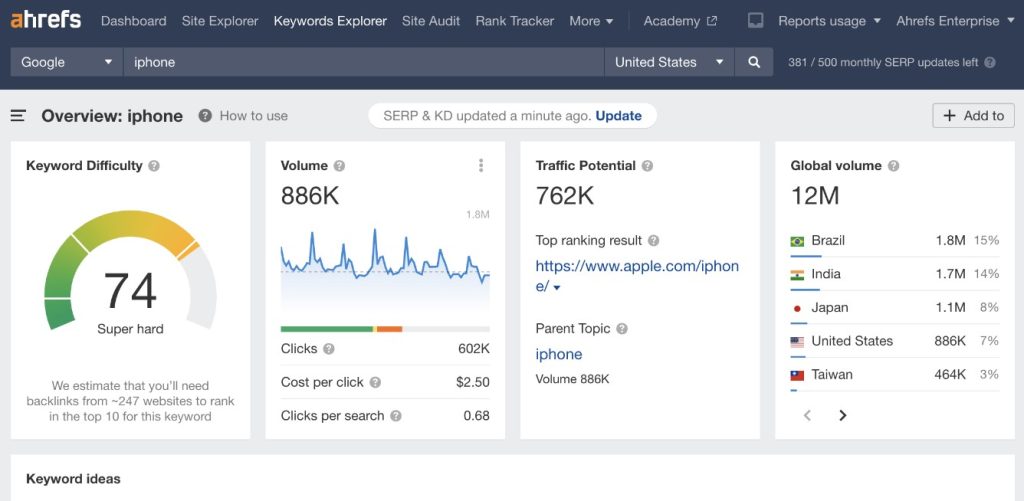
Image via Ahrefs
That said, as cynical as it sounds, using relevant keywords alone is not enough. You must place them strategically across your content. Here’s how:
- Use your main keyword in your title, preferably at the beginning
- Use your main keyword in your meta description, URL, and headings
- Use your main keyword and related keywords in your body content, image alt text, captions, and file names
2. Optimize and Update Content
When it comes to website and Instagram SEO, content is king. Your content is what attracts and engages your audience and provides value to them. It is also what the crawlers use to evaluate and index your web pages.
However, the SEO landscape and Google algorithms are constantly changing. Therefore, you want to keep your content optimization game in flux.
Here’s how you can optimize your content:
- Write specifically for the audience of the day: Research and understand your audience’s needs, preferences, and pain points, and create content that addresses them directly.
- Write for the search engine: Adopt SEO best practices, such as using:
- Relevant keywords
- Headings
- Meta tags
- Links
These are all best practices for cracking the SEO code. At the same time, you want to avoid duplicate content, broken links, and spelling and grammar errors.
- Update your content regularly: Updating your content regularly means adding new information, removing outdated information, and improving existing information. Why do you need to do this? Because:
- Your competitors are not resting either
- Searcher behavior and interest change constantly
- And your information could be outdated
- Use SEO audit tools: You can use SEO audit tools to do the hard work for you when it comes to optimizing your content.
3. Focus on Link Building
One of the most useful tips to improve search engine indexing is through link building.
Aira asked hundreds of SEO experts if they felt link-building was effective in influencing organic search rankings. The results show that it is, with an average score of 7.8 out of 10.
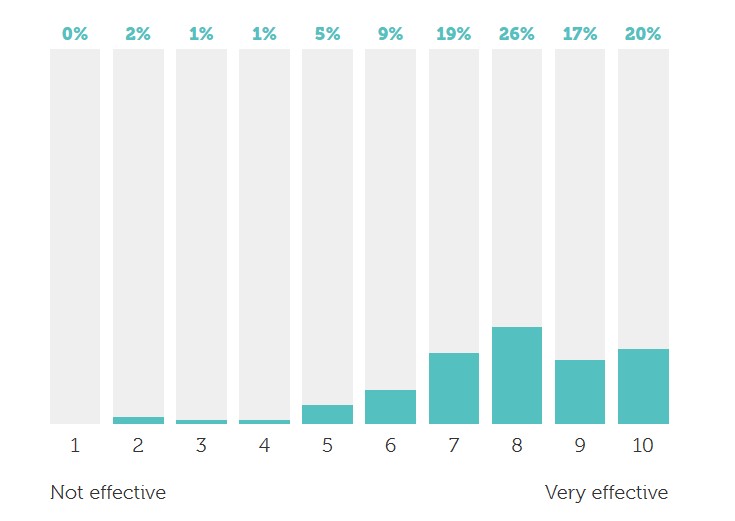
Image via Aira
Think of links as votes of confidence and trust from other sites, signaling to the search engine that your site is valuable and authoritative.
Here are some ways you can build links:
- Create valuable, link-worthy content: Valuable content will earn you links naturally. Create valuable content, and your link-building efforts will flourish.
- Reach out to relevant sites: Another way to build links is by networking or reaching out to sites in your niche and pitching to them.
- Find unlinked brand mentions: Search for websites that mention your brand or business without actually linking to you. Use tools such as Ahrefs, Semrush, or Google to pinpoint these mentions.
Yes, links are important. But you want to focus on certain types of links if you want to optimize your SEO content. Some examples include:
- Image links
- Editorial links
- Nofollow links
- Do-follow links
- Guest post links
- High-quality links
- User-generated links
4. Submit XML Sitemap on Google Search Console
As we’ve seen, Google discovers new content and web pages by crawling the web. However, if your web page is not linked to or from other known pages, crawlers cannot find it.
And this is where sitemaps come in.
A sitemap is a file that lists and links to all the web pages on your site. That said, submitting a sitemap on Google Search Console helps the crawlers discover and index your web pages faster and easier.
Submit your sitemap on Google Search Console with these steps:
- Create an XML sitemap for your site, just like this sample for Up
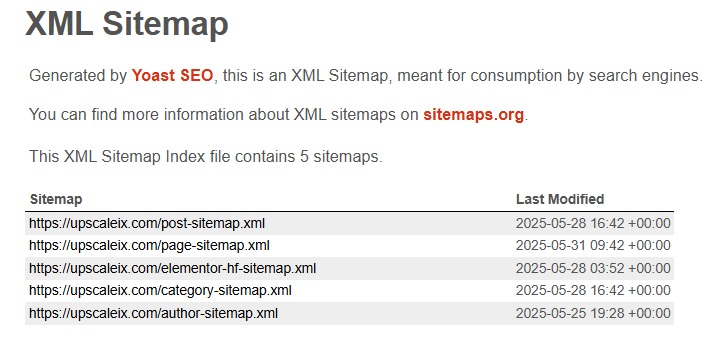
Image via XML-Sitemaps
- Upload your sitemap to your site’s root directory, such as https://www.example.com/sitemap.xml
- Log in to your Google Search Console account and verify your site ownership
- Go to the Sitemaps section, enter the URL of your sitemap, and click on Submit
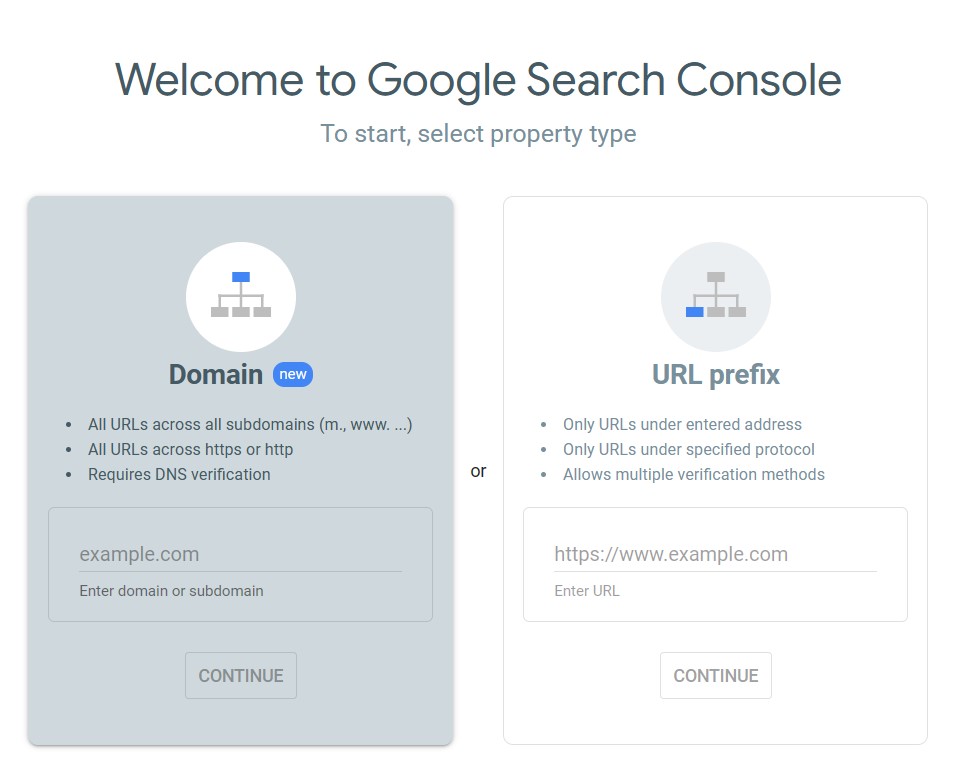
Image via Google Search Console
Meanwhile, there are instances, such as working outside Google’s regular crawling schedule, where you would have to index your site manually. Here’s how to request manual indexing in such cases:
- Go to the URL Inspection section on Google Search Console and enter the URL of your web page
- Click on “Request Indexing” and wait for Google to check and process your request
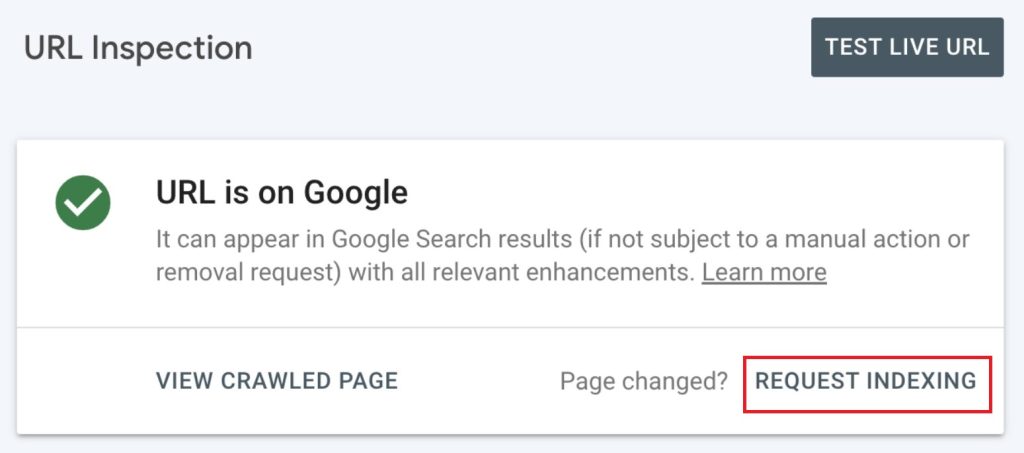
- And that’s it. Check the status of your request to see if your web page has been indexed
5. Make Your Site Mobile-Friendly
It cannot be overemphasized why mobile optimization is one of the most important tips to improve search engine indexing.
But here are a few reasons why:
- Mobile devices currently account for more than half of the global web traffic.
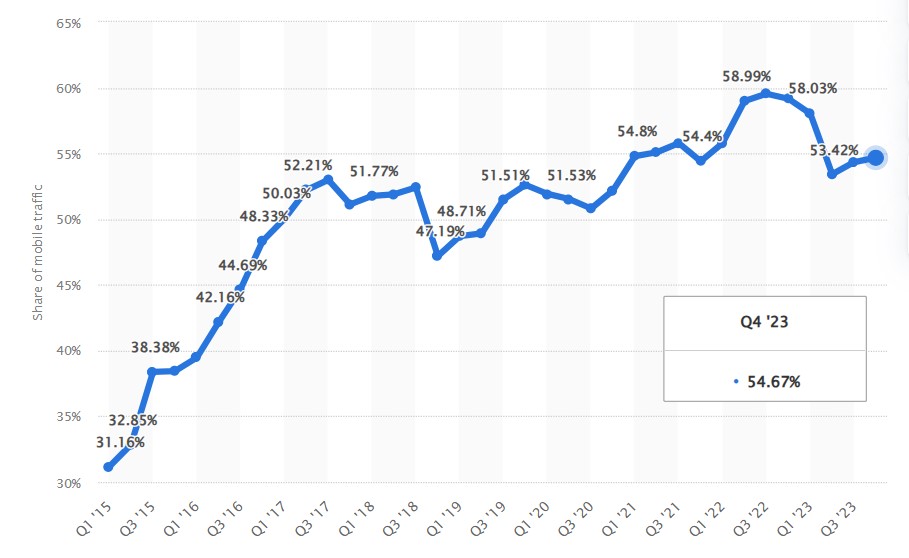
Image via Statista
- Google currently uses what it calls mobile-first indexing, which is techspeak for how it prioritizes the mobile version of your site over the desktop version.
- Mobile users have different preferences and behaviors compared to their desktop counterparts.
That said, here are some tips for mobile optimization:
- Use a responsive website design
- Optimize your site speed
- Minify and compress your code, images, and files
- Use CDN to distribute your content
- Enable browser caching
- Optimize your site navigation
- Use a clear and simple menu layout
- Use descriptive and consistent labels
- Use breadcrumbs, search bars, and filters
6. Streamline Site Structure
If you’ve learned anything so far, it is that site structure is paramount for indexing. Taking it a step further and streamlining your site structure makes it easier for both your users and the search engine to navigate.
To streamline your site structure, you can:
- Use a hierarchical structure: This structure follows a top-down approach, where the main pages are at the top, the subpages are below them, and the individual posts are on the floor.
- Use a shallow structure: A shallow structure basically keeps the number of clicks required to reach any page on your site to the minimum, ensuring easy accessibility for search engines. This also helps improve your site’s crawl budget.
- Use a clear and consistent naming convention: Simplicity is always in fashion. Make sure that your site’s pages and content are descriptive and relevant to your topic and audience.
7. Use the Right Tools
My seventh and final tip to improve search engine indexing is to use the right tools.
Tools are your best friends when it comes to improving your indexing and ranking. They can help you monitor, analyze, and optimize your site’s performance, as well as identify and fix any issues that may affect your SEO.
Here are some of the best tools for improving your search engine indexing:
- Google Search Console (analyze and optimize your site’s traffic and performance on Google)
- Screaming Frog (crawl and audit your site’s pages)
- Robots.txt (allow or disallow certain pages, directories, or files from being crawled and indexed)
- HTML/XML sitemaps (discover and index your web pages faster)
- Yoast SEO (optimize content, keywords, website meta tags, links, and readability for SEO)
- Semrush (conduct keyword research, competitor analysis, and site audit)
- Ahrefs (analyze and fix backlinks, broken links, and orphan pages)
- Moz Pro (optimize page authority for SEO)
- Wishup: Digital markting virtual assistant or digital marketing VA that automates digital marketing tasks.
Conclusion
In this post, I have shared 7 tips to improve your search engine indexing and boost your organic traffic. These tips are:
- Use relevant keywords
- Optimize and update content
- Focus on link-building
- Submit XML sitemap on Google Search Console
- Make your site mobile-friendly
- Streamline site structure
- Use the right tools
Search engine indexing is super important for online businesses, considering it helps them reach and convert customers. Follow the tips I’ve outlined here to see better results with overall indexing performance and thank me later.
